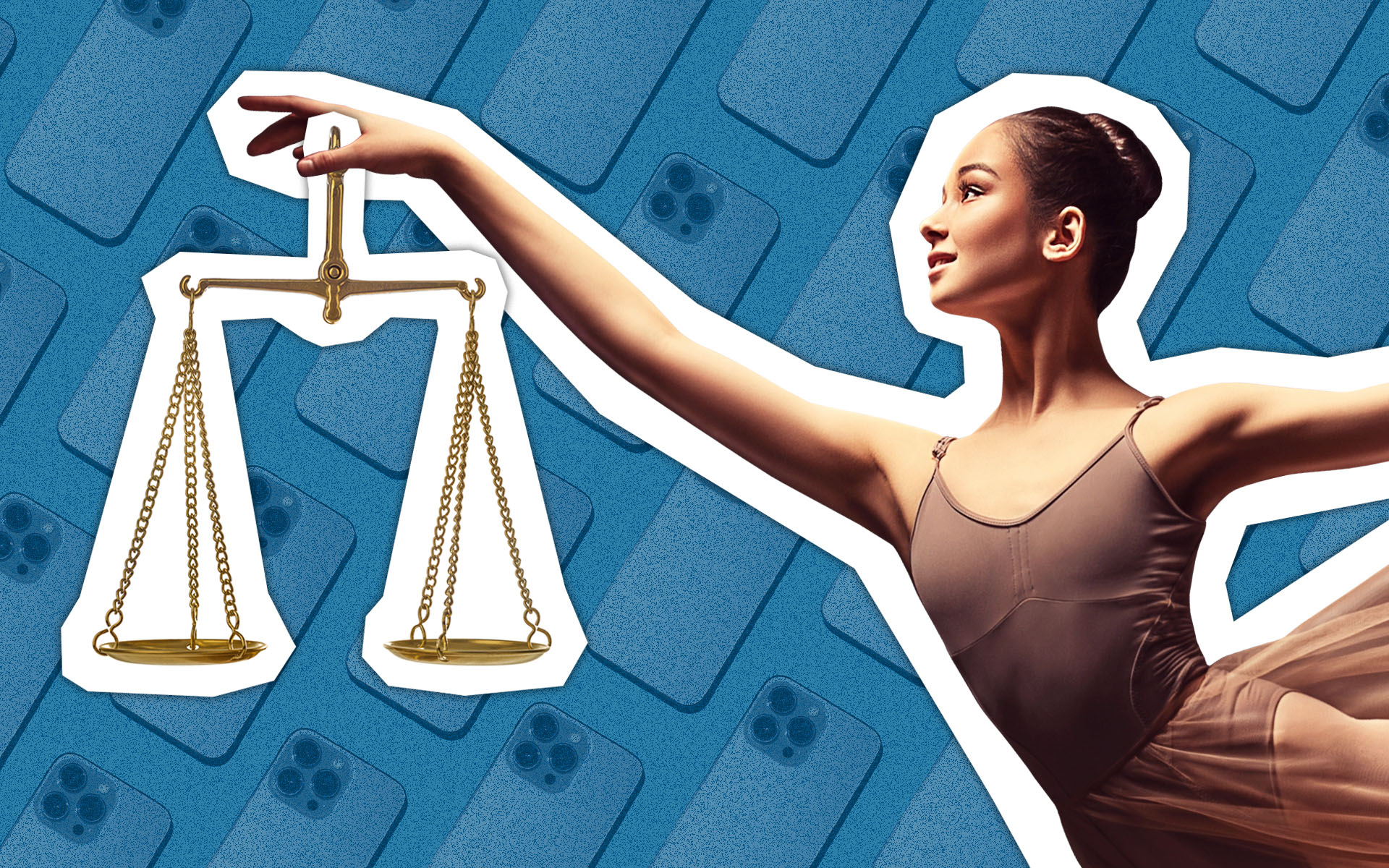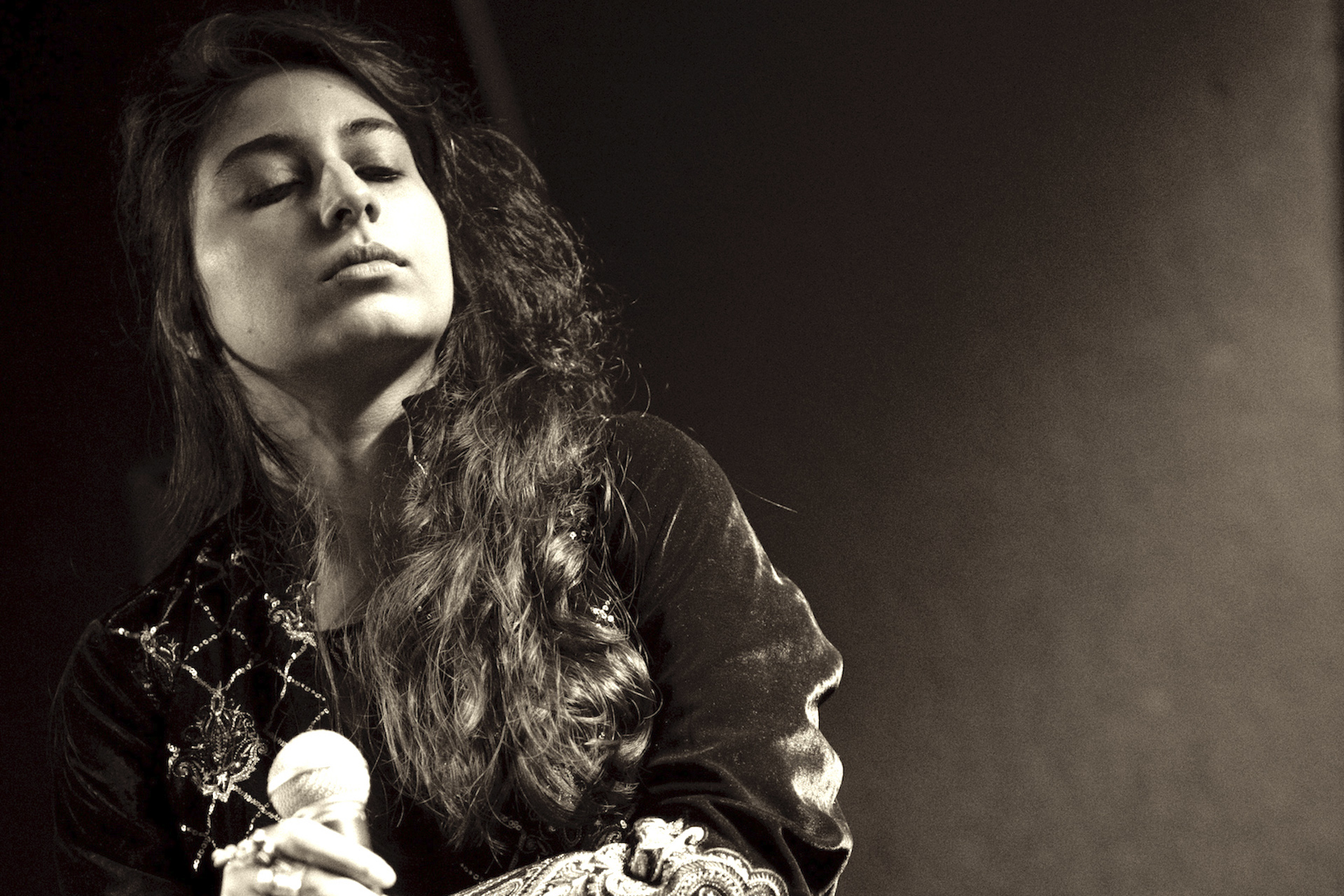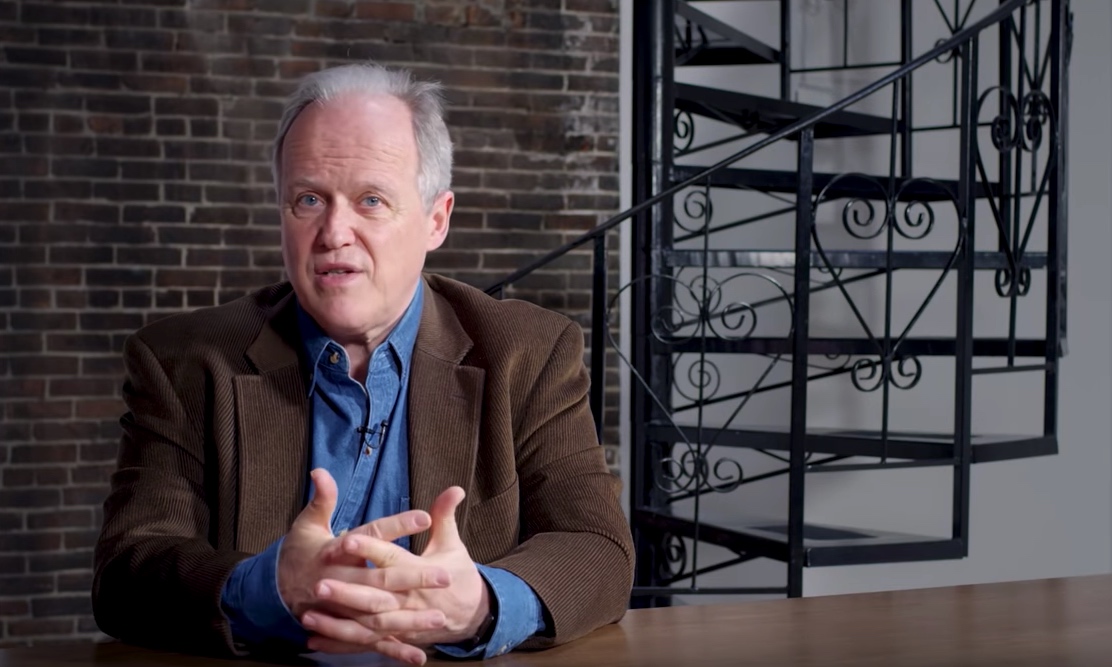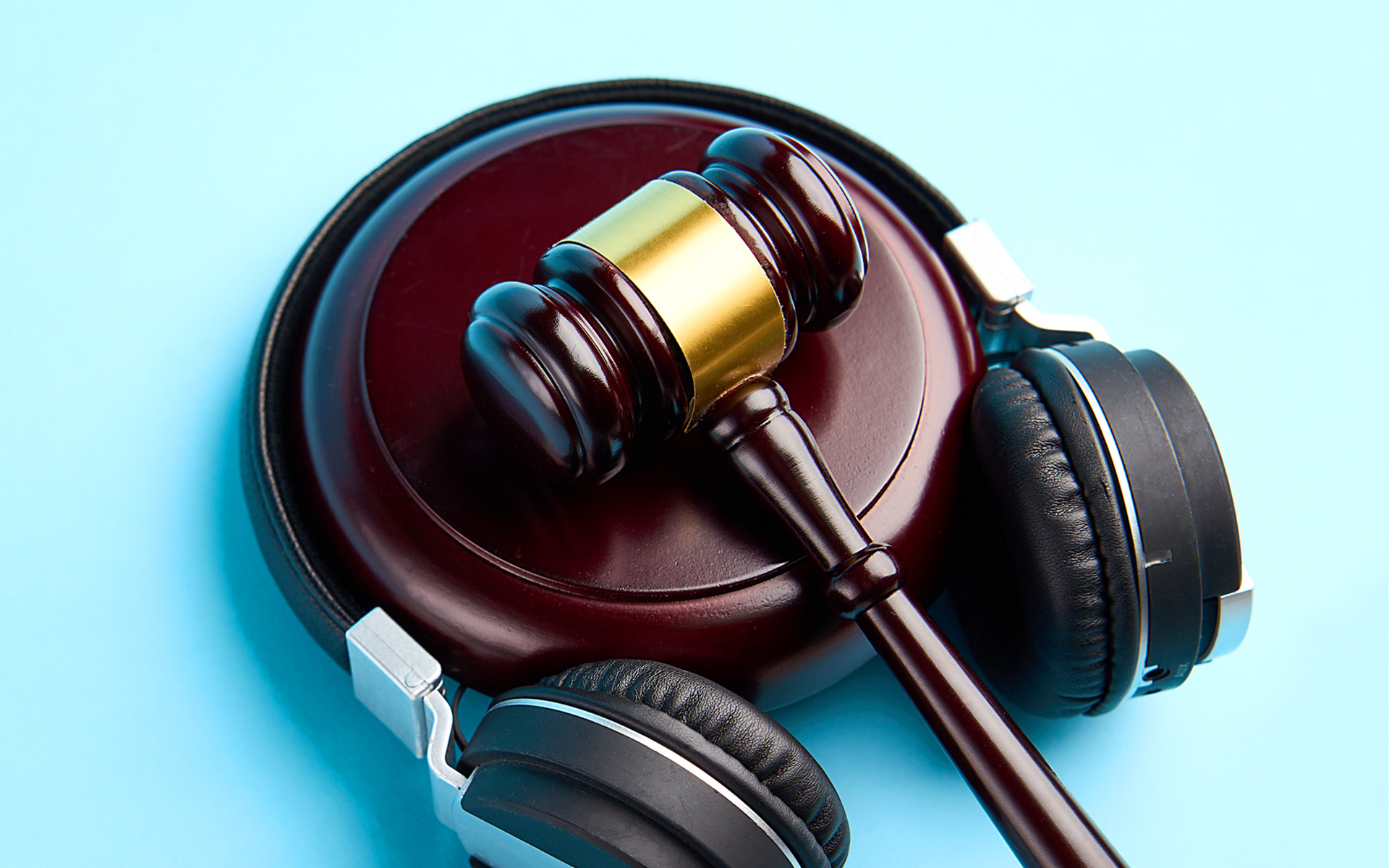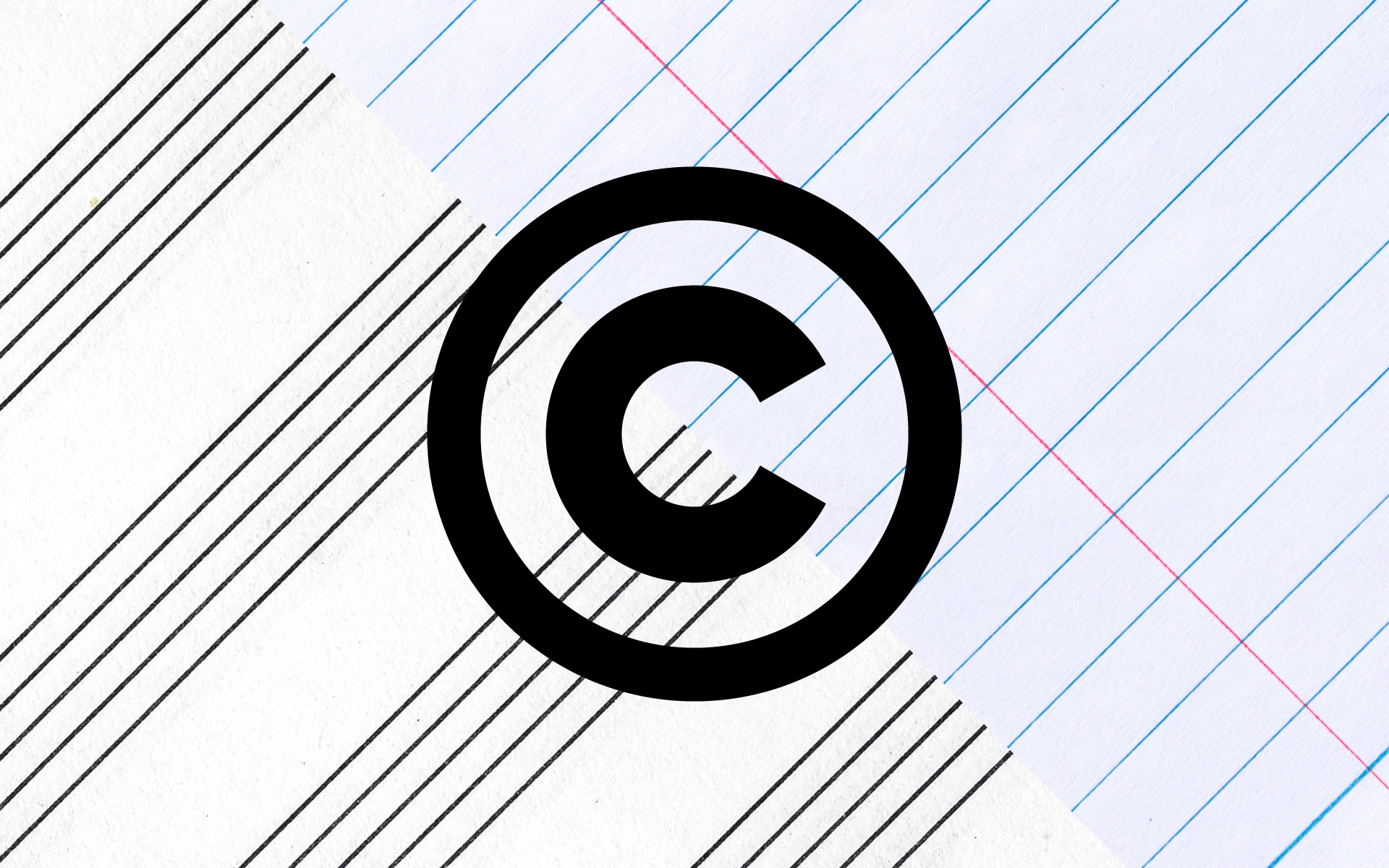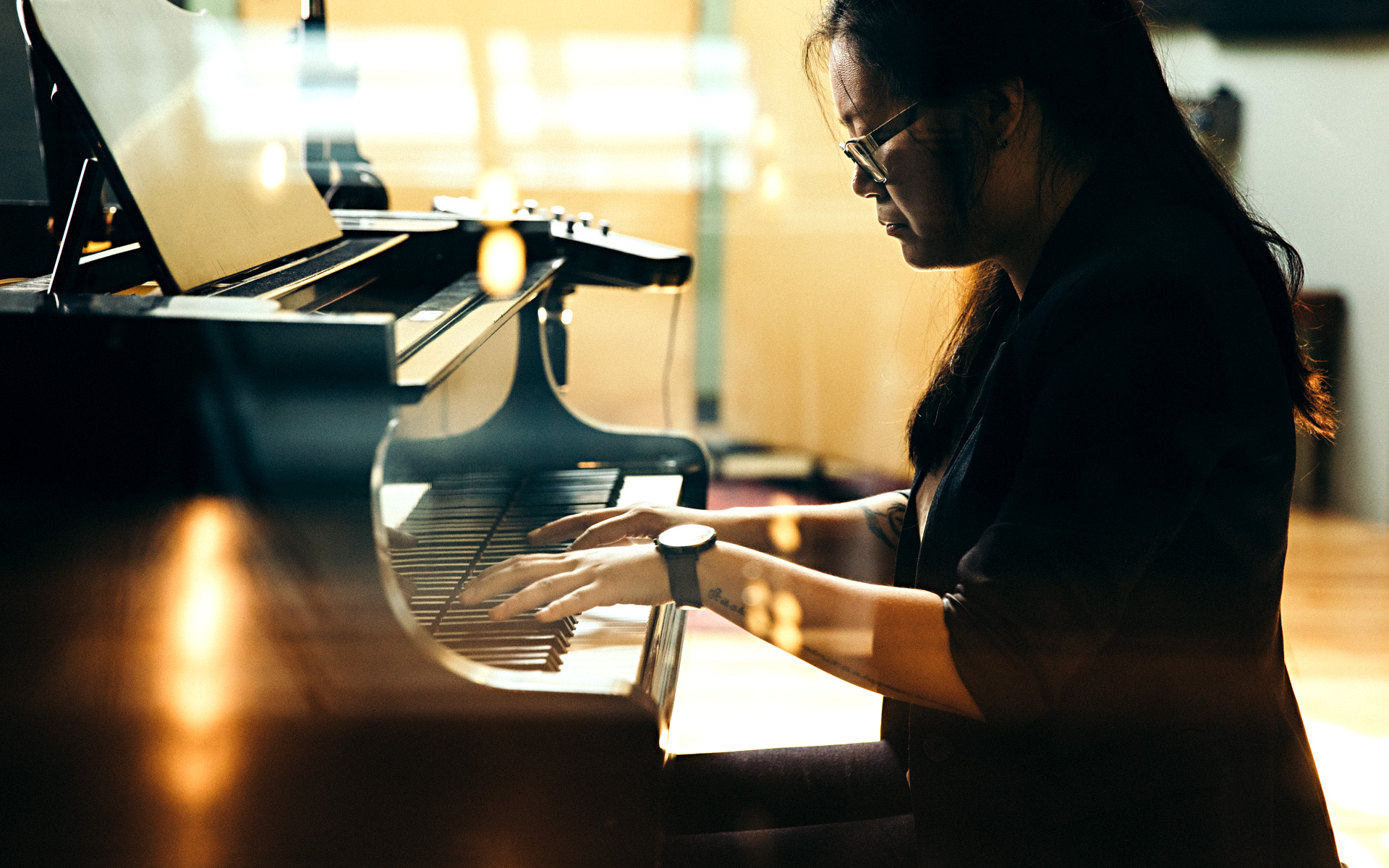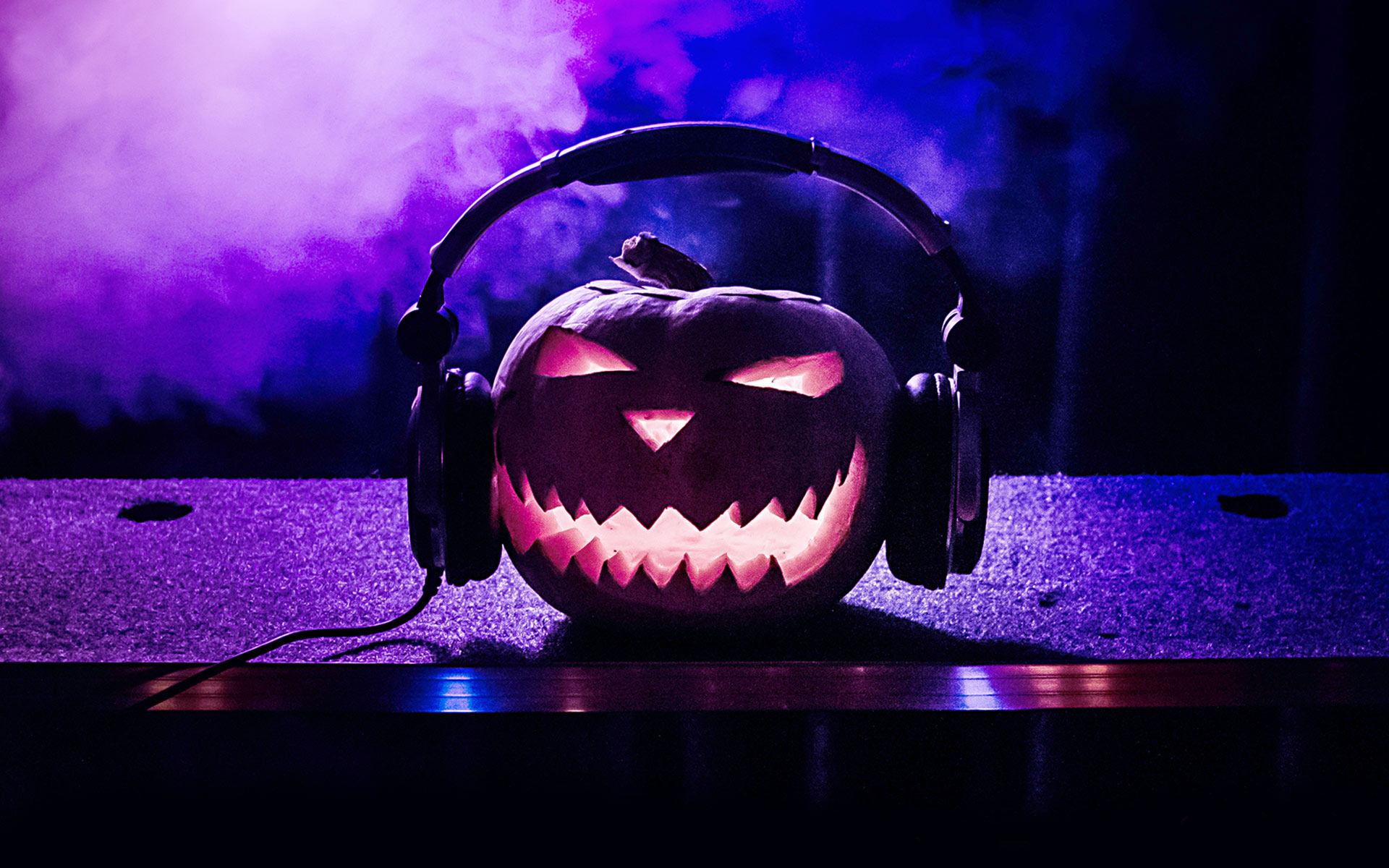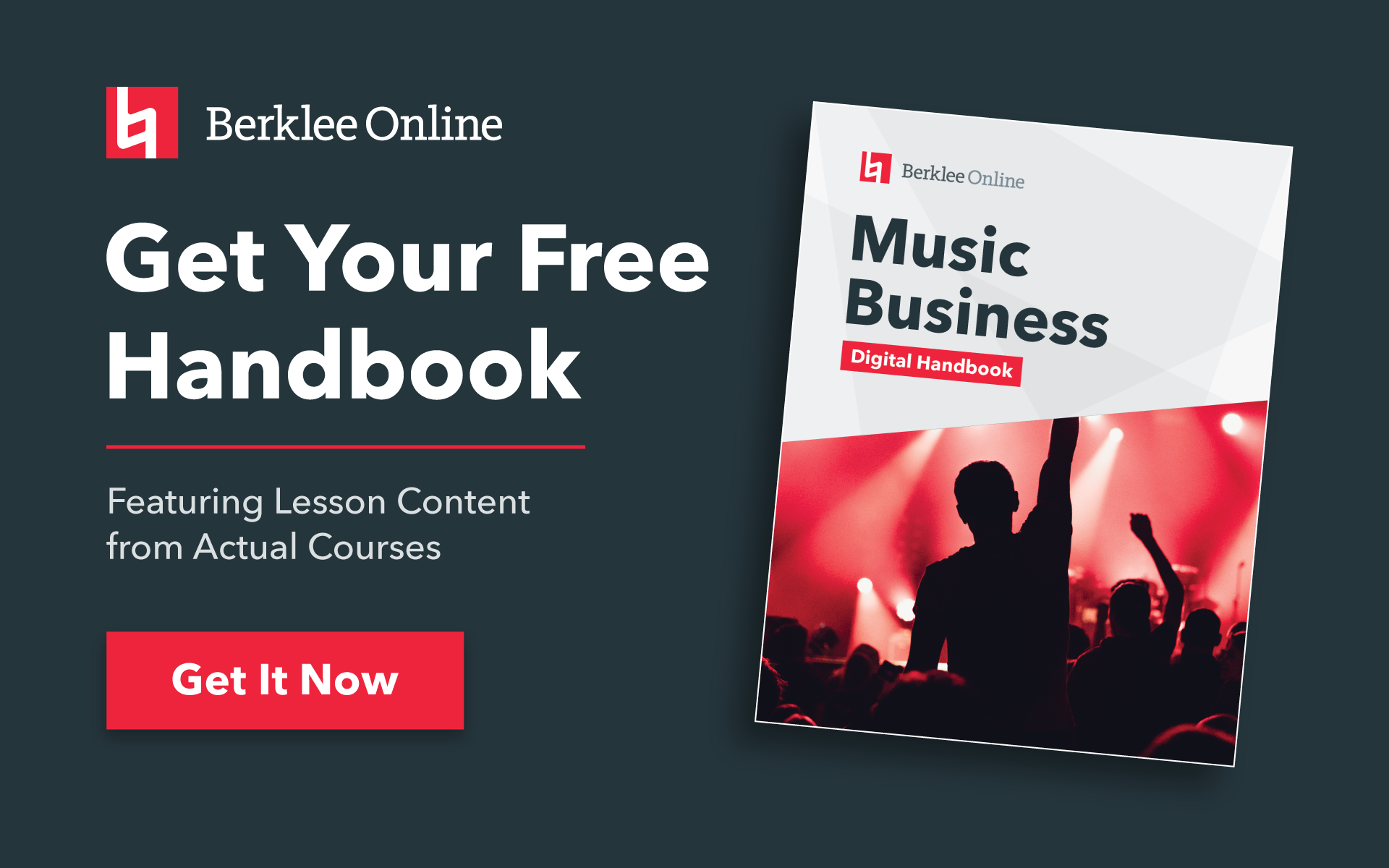As a musician, it’s important to know how copyright law affects your work. Dr. E. Michael Harrington is an instructor of Music Business Law and Music Licensing at Berklee Online. In this series of videos, he dives into the specifics of music copyright and how you can protect yourself as an artist.
Copyrights, Trademarks, and Patents
In the music business we talk a lot about copyrights, trademarks, and patents. Before we get too deep into it let’s go over some definitions. Patents last for a shorter amount of time than copyrights, but they are very powerful. While trademarks work well, he suggests that you research other trademarks to make sure elements, like your color scheme and logo, aren’t too similar to another trademark.
Exclusive Rights
Now let’s discuss the six exclusive rights of copyright law in detail. The first is the right to copy a work. The second is the right to make a derivative work—a work derived from something you’ve already done. This could mean someone wants to make a movie out of your song, and you, as the songwriter, have the right to approve or decline. The third is the right to distribute your work to the public. This means you are in control of selling/renting your product and how it gets sold/rented. The fourth is the right for you to perform your work in public, meaning when your song is played in public, you are paid for it. You can also decide that you don’t want it performed by other people. The fifth is the right to display your work in public, such as lyrics. This can pertain to putting lyrics on clothing or other visual objects. The sixth is that you have the right to exclude anyone from broadcasting or streaming the recording.
The fourth is the right for you to perform your work in public, meaning when your song is played in public, you are paid for it. You can also decide that you don’t want it performed by other people. The fifth is the right to display your work in public, such as lyrics. This can pertain to putting lyrics on clothing or other visual objects. The sixth is that you have the right to exclude anyone from broadcasting or streaming the recording.
Co-Writing and Performance Rights Organizations
Next, let’s go over co-writing and how performance rights organizations (PROs) like ASCAP, BMI, and SESAC pay songwriters for their music. In a co-writing arrangement, the payment is automatically split equally unless otherwise stated in a written agreement. This next video delves into issues such as each person contributing equally to the song. ASCAP, BMI, and SESAC all have one thing in common: they’re trying to get their members paid! While you as a songwriter reap rewards and benefits, there can also be issues. It’s possible to be sued for infringement. Make sure you think before you get into a co-writing situation. There are many advantages, but you have to think about the mistakes that could occur as well.
Fair Use
You may have heard the term “fair use,” but do you know what it means? Basically, when you quote someone, or take material that is not yours and use it in your writing, you must cite the source. It’s more complicated than that, however. In this next video we detail the ins and outs of fair use in songwriting.
Fair Use and Copyright Infringement
So now that we know what fair use means, how do we distinguish between fair use and copyright infringement? Let’s go through some popular examples involving artists like the Beatles, James Taylor, the Chicks, Miles Davis, and Jimi Hendrix, specifically in instances of parody. Even though a title is not copyrightable, if the title is also a lyric, then it is copyrightable. Parody, according to the Supreme Court, means you have to take from the heart of the song because the listener has to be reminded of what the song is about. If you state a melody the same way another artist did, the same number of times, this is direct copying. It is debatable whether or not this is fair use.
Independent Creation
Next, we’ll use patents to explain the concept of independent creation. Independent creation means that if you write a lyric that is the same or similar to a previously written lyric, you are not obligated to change it. “I think about you” is an example of a lyric used in multiple songs. However, using the same chords and similar melody in two different songs is cause for music copyright infringement. Another music copyright issue that revolves around independent creation is a song that Carrie Underwood did with Ludacris, with the lyrics, “I’m invincible, I’m unbreakable, I’m unstoppable.” Countless other artists have used these exact words. However, lyrics can be created independently, so don’t worry if you have words common with other songs—it’s part of language.
Public Domain
In the next video, we go over what public domain means. For something to be considered in the public domain, it has to have been created before 1923. For example, anything that Bach wrote is public domain, so his music can be used as inspiration and portions can be changed. In the twentieth century, copyright law changed from 28 years to having automatic renewal. I have served as an expert witness in high-profile court cases regarding infringement, so I am always excited to share examples when people thought a certain song was in the public domain, only to be sued after finding out that the song was protected by copyright.
Composition and Sound Recording Copyrights
Next, we’ll go over the difference between composition copyright and sound recording copyright. A song will always have these two copyrights and a musician will get paid royalties for every use of a recording: vinyl, digital, etc. He details some of the unusual specifics, like if another artist covers your song and posts it online, theoretically, the composer and record label will all get paid. If it’s played on FM radio, only the composer gets paid.
Sampling in a Sound Recording
In this video, we’ll discuss the concept of sampling. Sampling is basically taking something that previously existed and repurposing it to use in your own work. The idea that sampling is “stealing” was once the prevalent thought in the music industry, but as the art evolved and more musicians used sampling to create something new and original, that idea has faded.
However, there are still music copyright considerations. An individual must ask for permission from the songwriter, publisher, and record label to sample another artist’s composition and sound recording. This means that the songwriter, publisher, or record company could deny permission. Dr. Harrington talks about the case of Gilbert O’Sullivan and Biz Markie, which set precedent in asking permission to use a sample in a composition.
Replay and Interpolation
Let’s talk about replay and interpolation, and how they’re different from sampling. The terms “replay” and “interpolation” are used interchangeably, and both mean that you are re-performing the music rather than sampling it. Though this concept still involves a music copyright issue—you need to seek permission from the original artist in order to use the material—it’s less difficult to obtain permission than it is with sampling.
Let’s start something by talking about Michael Jackson’s “Wanna Be Startin’ Somethin’,” the leadoff track on his smash album, Thriller. In the last 89 seconds of the song—the “mama-say, mama-sa, ma-ma-ko-ssa” part—the song interpolates a 1972 song called “Soul Makossa” by Cameroonian artist Manu Dibango. Jackson used the song without permission, Dibango sued, and the two settled out of court. The Black Eyed Peas and Rihanna have also interpolated the phrase “mama-say, mama-sa, ma-ma-ko-ssa” in their music and had varying consequences.
Next, we’ll discuss a case of replay interpolation that went to court: The Sugarhill Gang and Busta Rhymes. In his 1996 song, “Woo-hah!! Got You All in Check,” Busta Rhymes says the title line, which was argued was an interpolation of the Sugarhill Gang’s 1980 song, “8th Wonder,” which features the line, “Woo-ha, got them all in check.” Scholars will also note that the original line was sampled in the Beastie Boys’ 1989 song, “Shake Your Rump,” which was released before sampling cases began entering the courthouse. The Sugarhill Gang sued Busta Rhymes in 2012, and Busta Rhymes sued back, stating that the phrase was unique. The parties reached an undisclosed settlement in 2015.
Circuit Split
In this next video about music copyright, we’ll get into the music of George Clinton, specifically his song “Get Off Your Ass and Jam.” He argues that if there is a part of a song that sounds as if it was copyrighted from another song, it is not copyright infringement if one cannot recognize the similarities between the two songs. The song has been sampled by artists like Public Enemy, Tone Lōc, A Tribe Called Quest, and Tupac Shakur, but it was most notably sampled by N.W.A. in the song “100 Miles and Runnin’,” which led to a lawsuit. The law then became, as ruled by the Supreme Court, that if an artist wants to sample part of another person’s work, they must obtain a license.
In contrast, Madonna sampled a horn hit from Salsoul Orchestra’s song “Love Break,” in her song “Vogue,” without asking permission, and was sued. The court, in this case, ruled the horn hit was not original, therefore, Madonna’s use of it was justified in the eyes of the law. The fact that certain court circuits have different views regarding the need for a license when sampling is referred to as the “circuit split.” Whether or not you can use a sample without permission depends on what state you record the song in, and how the courts view it there.
Freeing “We Shall Overcome”
In this last video, I detail my involvement in helping free the Civil Rights anthem “We Shall Overcome” into the public domain. Working as an expert witness for lawyers Mark Rifkin and Randall Newman, I helped show that publishers Ludlow Music and the Richmond Organization should no longer receive royalties on a song that dates back to the 1780s, when Beethoven had originally written a harmony for it. In my view, the most popular recording of “We Shall Overcome” is probably Pete Seeger’s.
LEARN ABOUT BERKLEE ONLINE’S MUSIC BUSINESS MASTER’S PROGRAM



